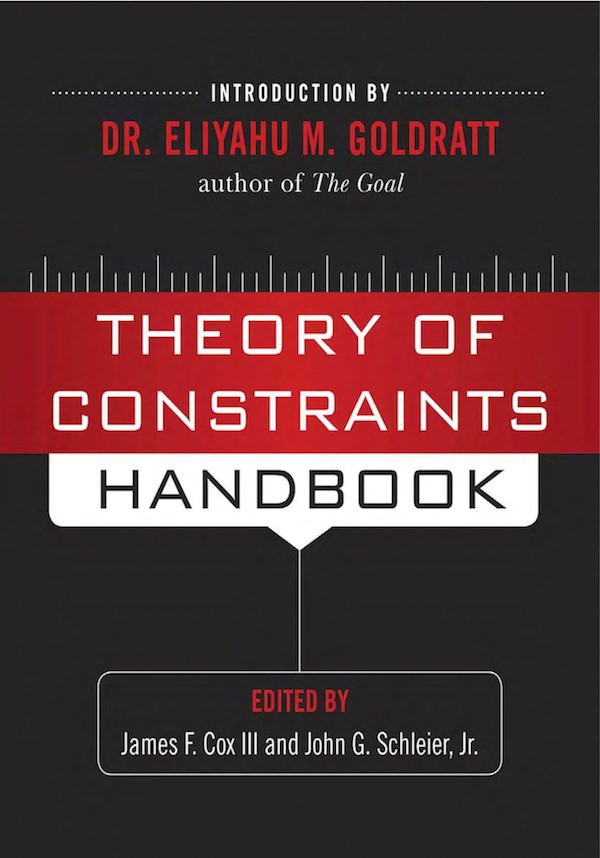Theory of Constraints Strategy (Chapter 18 of the Theory of Constraints Handbook)
Gerald KendallInfo
Level of TOC knowledge acquired:
Advanced and IntermediateLength:
33 pagesDesigned for:
Business owners, Consultants and LeadersTopics:
Strategy and Tactics, Decisive Competitive Edge (DCE), Ever-flourishing and Immunizing the Future of the CompanyApplication:
Current Reality Tree, Five Focusing Steps, Strategy & Tactic Tree and Thinking ProcessesLanguage:
EnglishFormat:
DownloadShare
Recommend
This is an individual chapter of Theory of Constraints Handbook. Over the past 20 years, some remarkable leaders have shared a wealth of knowledge on strategy. If you have read bestsellers such as Collins (2001) Good to Great, you may wonder what the difference is in a Theory of Constraints (TOC) strategy.
The answer, in one word, is focus. TOC strategy is as much about choosing to not do many things, as it is about focusing on the single biggest leverage point of an organization. TOC assumes that within every complex system, there is an inherent simplicity and limited resources.
This implies that there are very few constraints (leverage points) that determine the performance of a system. With limited resources, a good strategy must identify the constraint and apply those limited resources to squeeze the most out of it. This chapter outlines how the two different forms of TOC Strategy and Strategy and Tactics Trees and Thinking Process achieve a good strategy.
It illustrates generic strategies in Manufacturing, Distribution and Project Management, showing how marketing and sales are an integral part of any good strategy. Finally, the chapter concludes with how to integrate other methodologies, such as Lean and Six Sigma, and human behavior models, into an overall strategy.
Content:
- Introduction—What Differentiates a TOC Strategy?
- Chapter Overview
- Definitions and Foundations of TOC Strategy
- Overview of TOC Strategy Applications in Manufacturing, Projects, and Consumer Goods Distribution/Retail Organizations
- Four Generic Prerequisites/“Injections” for a Lasting Competitive Edge
- Desirable Effects of a Good Strategy
- Two Forms of Strategy and Tactics—TP and S&T Trees
- Integrating Other Methodologies Such as Lean and Six Sigma
- Dealing with Human Behavior in a Strategy
Comprehensive coverage of the Theory of Constraints
Complete Table of contents of the Theory of Constraints Handbook
- I: What is TOC?
- II: Critical Chain Project Management
- III: DBR, Buffer Management, and Distribution
- IV: Performance Measures
- V: Strategy, Marketing, and Sales
- VI: Thinking Processes
- VII: TOC in Services
- VIII: TOC in Complex Environments
- Theory of Constraints in Complex Organizations
- Applications of Strategy and Tactics Trees in Organizations
- Complex Environments
- Combining Lean, Six Sigma, and the Theory of Constraints to Achieve Breakthrough Performance
- Using TOC in Complex Systems
- Theory of Constraints for Personal Productivity/Dilemmas
- IX: Summary
About the Authors:
James F. Cox III, Ph.D, CFPIM, CIRM, holds TOCICO certifications in all disciplines. He is a Jonah's Jonah, Professor Emeritus, and was the Robert O. Arnold Professor of Business in the Terry College of Business at the University of Georgia. Dr. Cox has written three books on TOC.
John Schleier holds TOCICO certifications in all disciplines. He was President and Chief Operating Officer of the Mortgage Services Division of Alltel, Inc., Executive Vice President of Computer Power, Inc., and Director of Office Systems and Data Delivery for IBM.









































